Rice is the staple food of Malaysians, who may see rice as something ordinary. However, rice holds a special place in Borneo. Kadazandusun people, the largest indigenous group of Sabah, believe that rice has soul because the presence of paddy spirits, Bambarayon. Linopot is rice being packed and wrapped nicely in a big leaf, a traditional takeaway of Sabah natives. The word “Linopot” means packing in Dusun language.
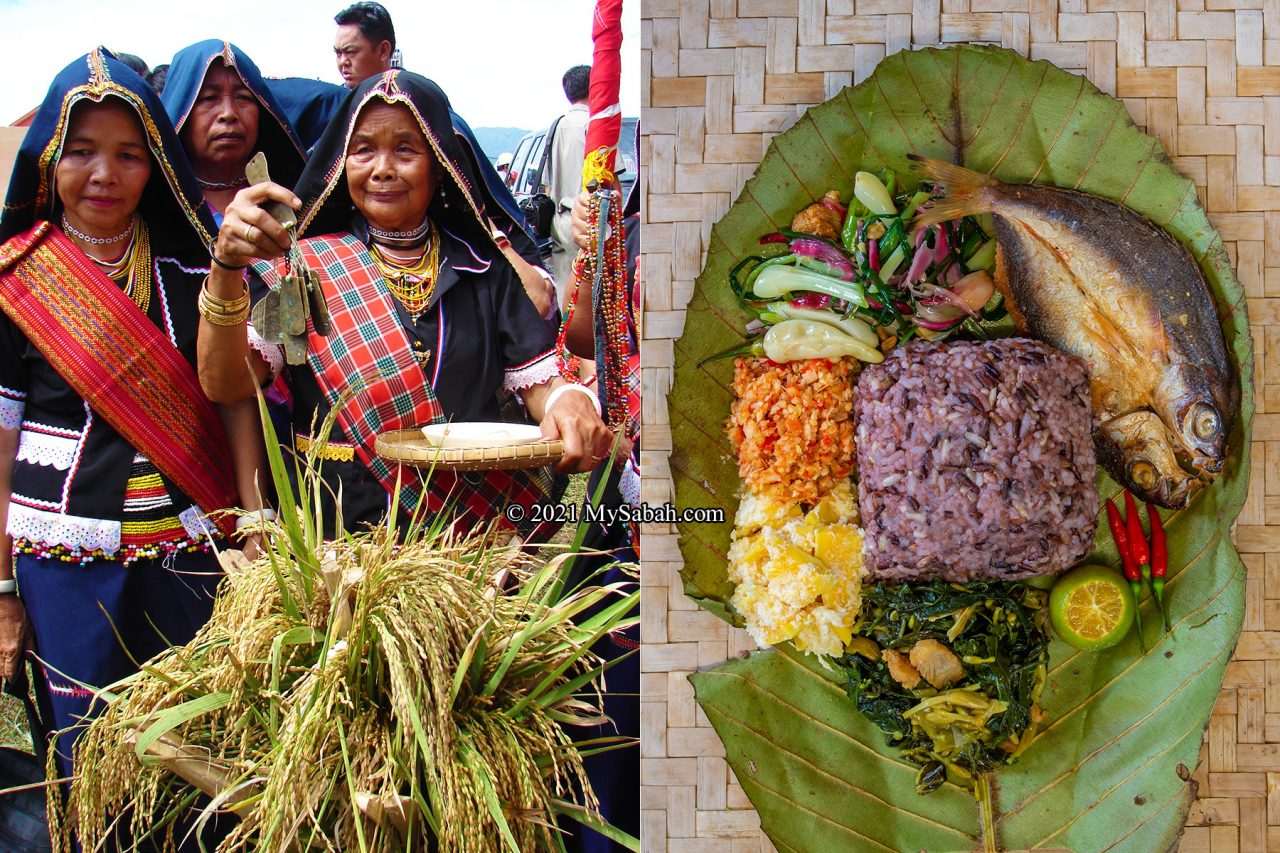
In old days, before plastic food containers are common, farmers and villagers, who left home for long hours to work in farm or forest, would bring Linopot with them as lunch pack. Rice packed in Linopot can last for days without going rancid. After unwrapping, the leaf is used as an eco-friendly plate and need no washing.
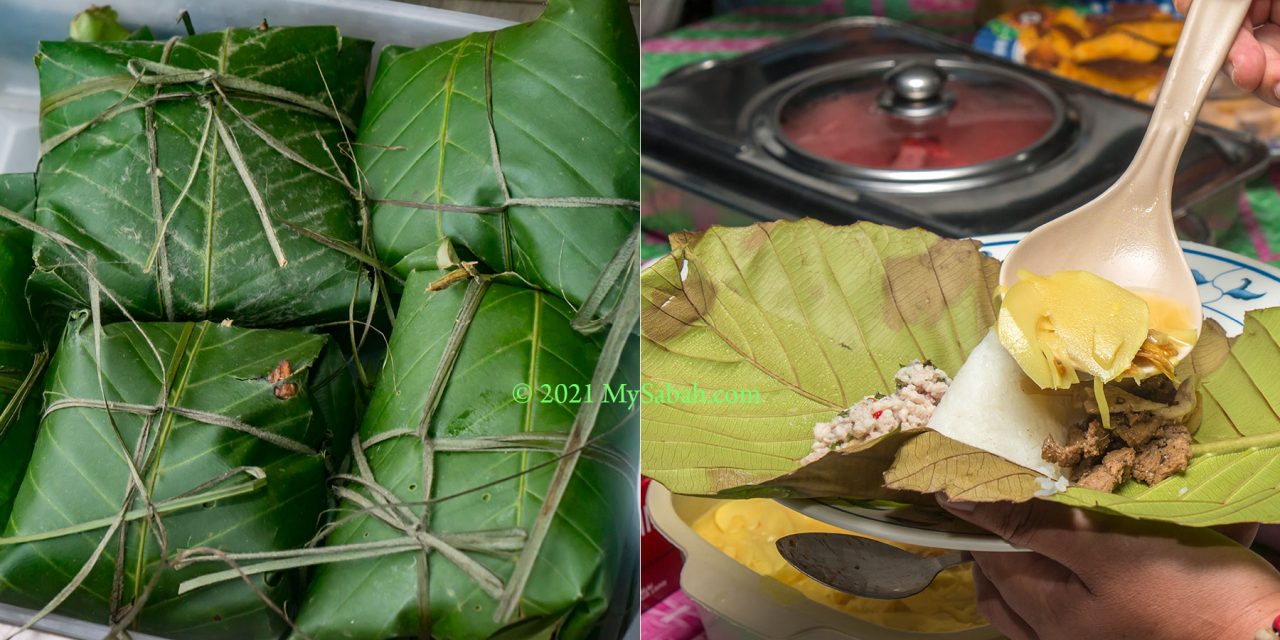
Rice of Linopot
In traditional preparation, hill paddy was mostly used in Linopot, and the rice can be mixed with other starchy crops such as yam, to create different types of rice like the following (Note: Nasi means Rice in Malay language):
- Nasi Gu’ol (rice mixed with yam)
- Nasi Tawadak (rice mixed with pumpkin)
- Nasi Mundok (rice mixed with cassava)
- Nasi Kasou (rice mixed with sweet potato)
- Nasi Tadong (Black Hill Paddy)
- Takano (rice in Dusun language)
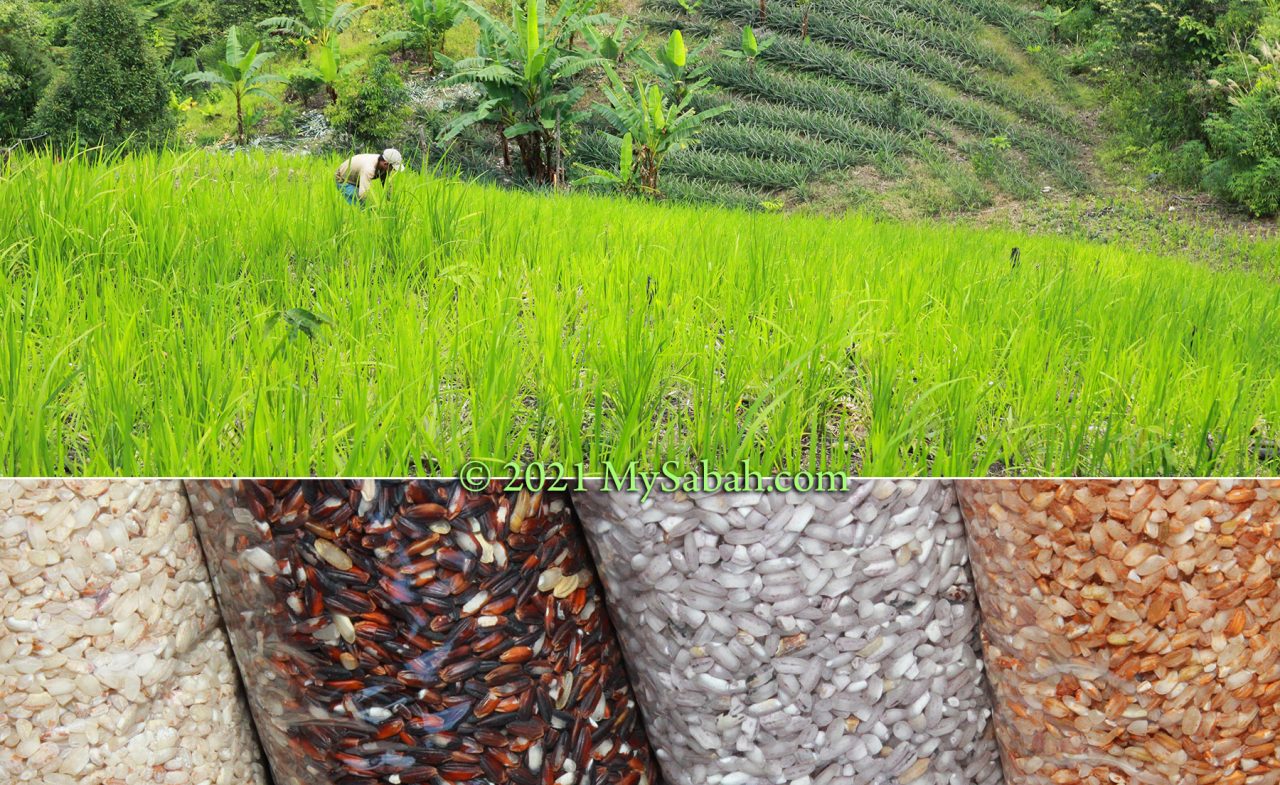
Nowadays paddy sold in supermarket is mainly processed white paddy. Though processed white race has longer shelf life and more pleasing to the eyes, its best nutrients are gone due to the removal of bran and germ, which contain fiber, protein, antioxidants, vitamins and minerals. That’s why health-conscious consumers opt for brown rice, which retains these nutrients. The coloured hill rice of Linopot shares the similar health benefits. Moreover, the addition of root and tuber vegetables supplements complex carbohydrates that enhances the taste and nutrition too.
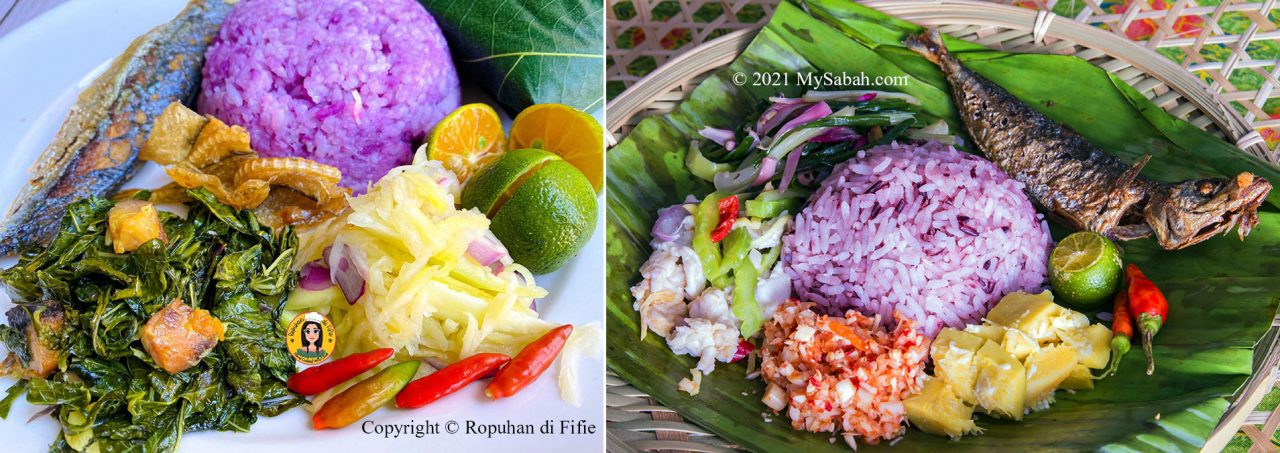
If the rice is boiled with yams or sweet potato, the colours of these vegetables would add a natural purplish or brown hue to the rice. You could add pandan leaf for extra fragrant. Once the rice is cooked, it will be pounded and stirred by a wooden pestle so the starchy ingredients are mashed to mix evenly with the rice.
Wrapping Leaves of Linopot
When the rice is prepared, next step is to pack it into Linopot with the fresh leaf of doringin, kobu, tarap, tintap, longkobung, toropoi, wonihan, or banana because their leaves are big and readily available.
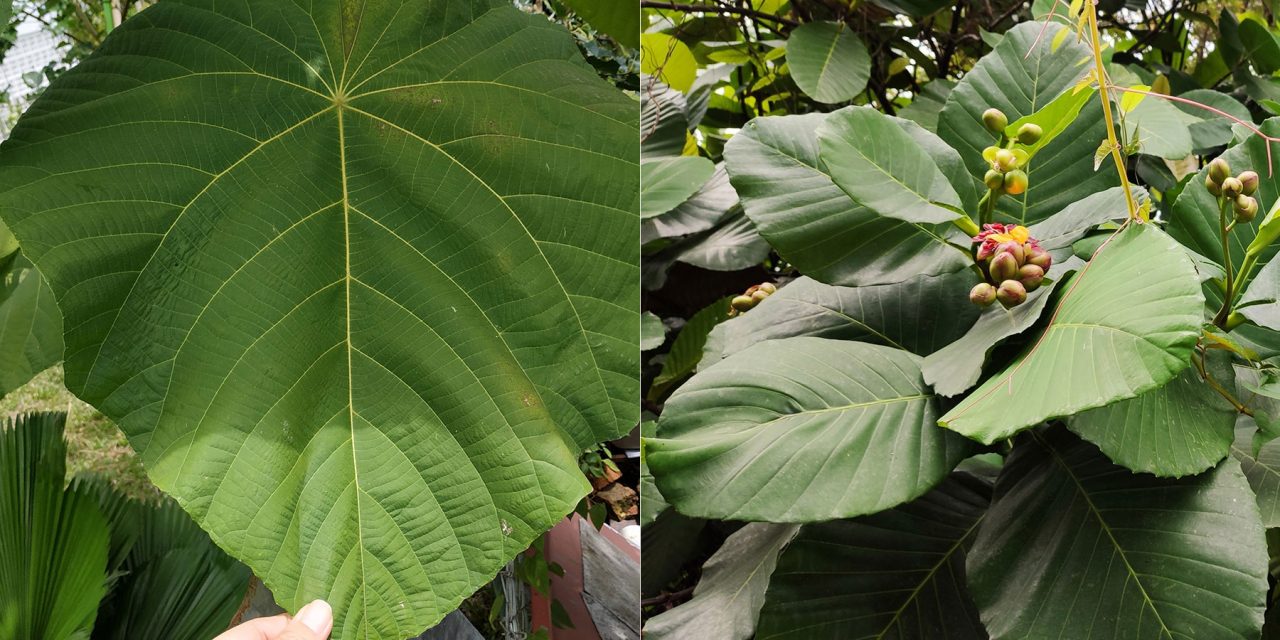
| Local Name | Common Name | Scientific Name |
|---|---|---|
| Doringin / Rungin | Simpoh Ayer | Dillenia suffruticosa |
| Wonihan / Wongian | Common mahang | Macaranga bancana |
| Timadang | Tarap | Artocarpus odoratissimus |
| Tintap | – | Neonauclea Gigantea |
| Longkobung | Parasol Leaf Tree | Macaranga tanarius |
| Kobu / Nyirik | Lerek / Kelupis | Phacelophrynium maximum |
| Lemba / Remba | Palm grass | Molineria latifolia |
| Ketapang | Indian almond | Terminalia catappa |
| Pisang / Punti | Banana | Genus: Musa |
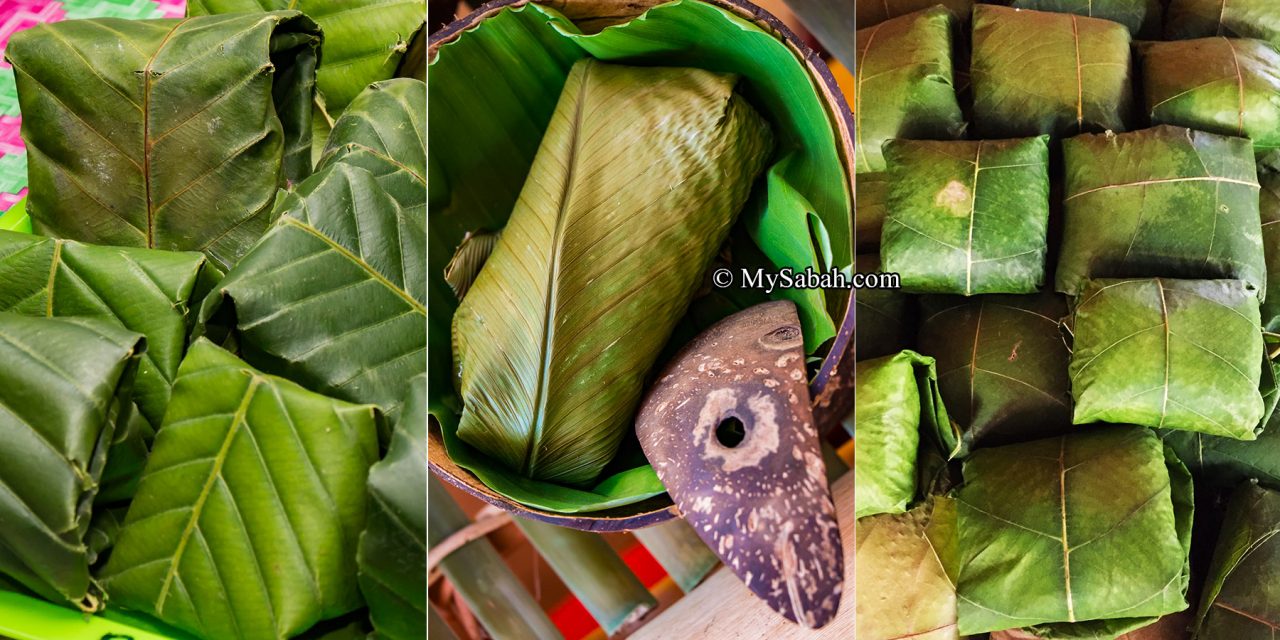
The aromatic leaf makes Linopot more palatable. The leaf also absorbs the excessive moisture in the rice so the food can last longer. The leaves are washed and dried before use. Some leaves need to have their hard midrib trimmed, so they can be bent and folded easily.
Making a Linopot
The wrapping is carried out while the rice is still hot, because the heated leaves are softer and easier to fold. The rice is first poured on the smooth surface of the leaf, then being pressed from all sides by both hands behind the leaf, until the rice is compressed and hold well together like a brick. Without this step, the rice will break apart and fall everywhere when we open the Linopot.
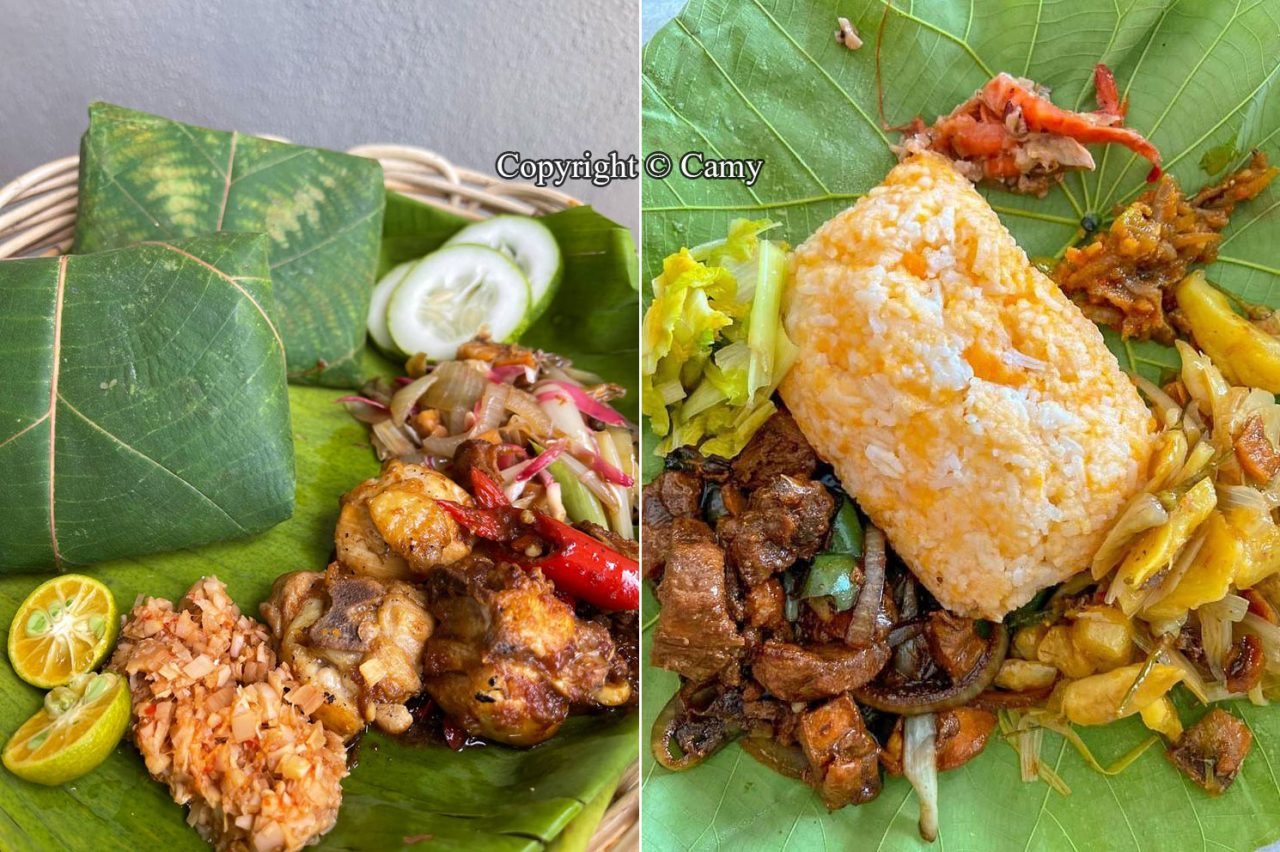
You can watch the video below to learn how a Linopot is made (spoken in Malaysia language, but you still can see how they do it):
Side Dishes for Linopot
The rice of Linopot is the main course, and to be eaten with condiments and side dishes. Basically they are makanan kampung (village food), and many are food that outsiders unheard of, for example, ferns, torch ginger flower, core of banana trunk, petiole of papaya. The villagers just harvest the food materials from their backyard, river or nearby forest.
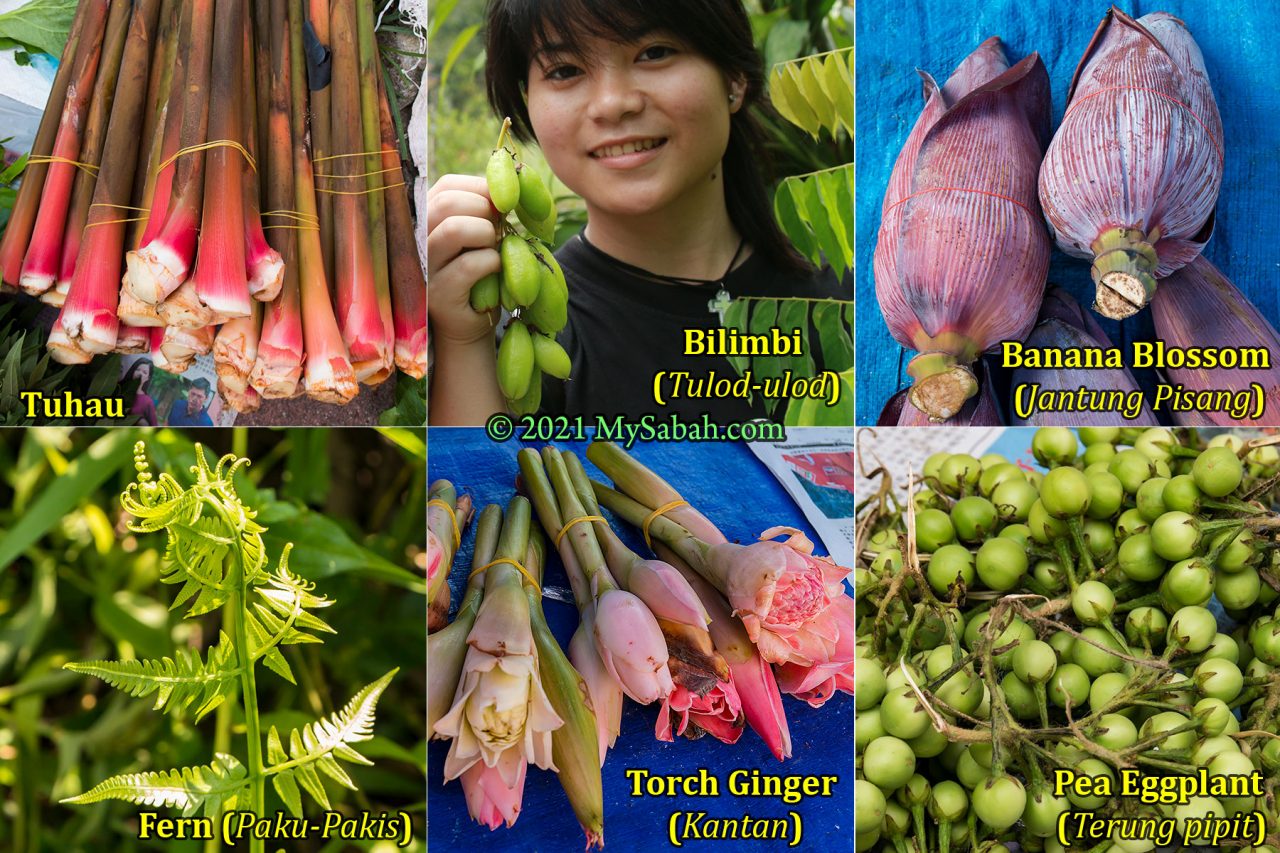
Below are some popular traditional food that go with Linopot (in English translation and description):
- Hinava: raw fish salad made of king mackerel (ikan tenggiri), mixed with calamansi juice, sliced shallots and grated ginger
- Bambangan (mangifera pajang): fermented wild mango, a mouth-watering appetizer
- Tuhau (etlingera coccinea): pickled wild ginger minces with distinct smell, also served in dried floss (Serunding)
- Losun: leaves of local wild shallots, eaten as salad or mixed veges
- Ikan basung: Mackerel scad (Decapterus macarellus), yummy when fried or cooked in sour soup (pinarasakan)
- Ikan masin: salted fish
- Bosou: raw fish / meat fermented in jar with brown rice, salt and pangium seeds for week(s)
- Pucuk betik: petiole of papaya leaf
- Sayur tumis: stir-fried vegetables
- Kantan: flower of torch ginger
- Rebung: bamboo shoots
- Kodop: edible fungus grown on fallen rubber trees
- Terung pipit: Pea Eggplant (Solanum Torvum)
- Mangga totok: pounded or pulped young mango
- Liposu: a common sour fruit in countryside
- Tulod-ulod: bilimbi, very sour fruit
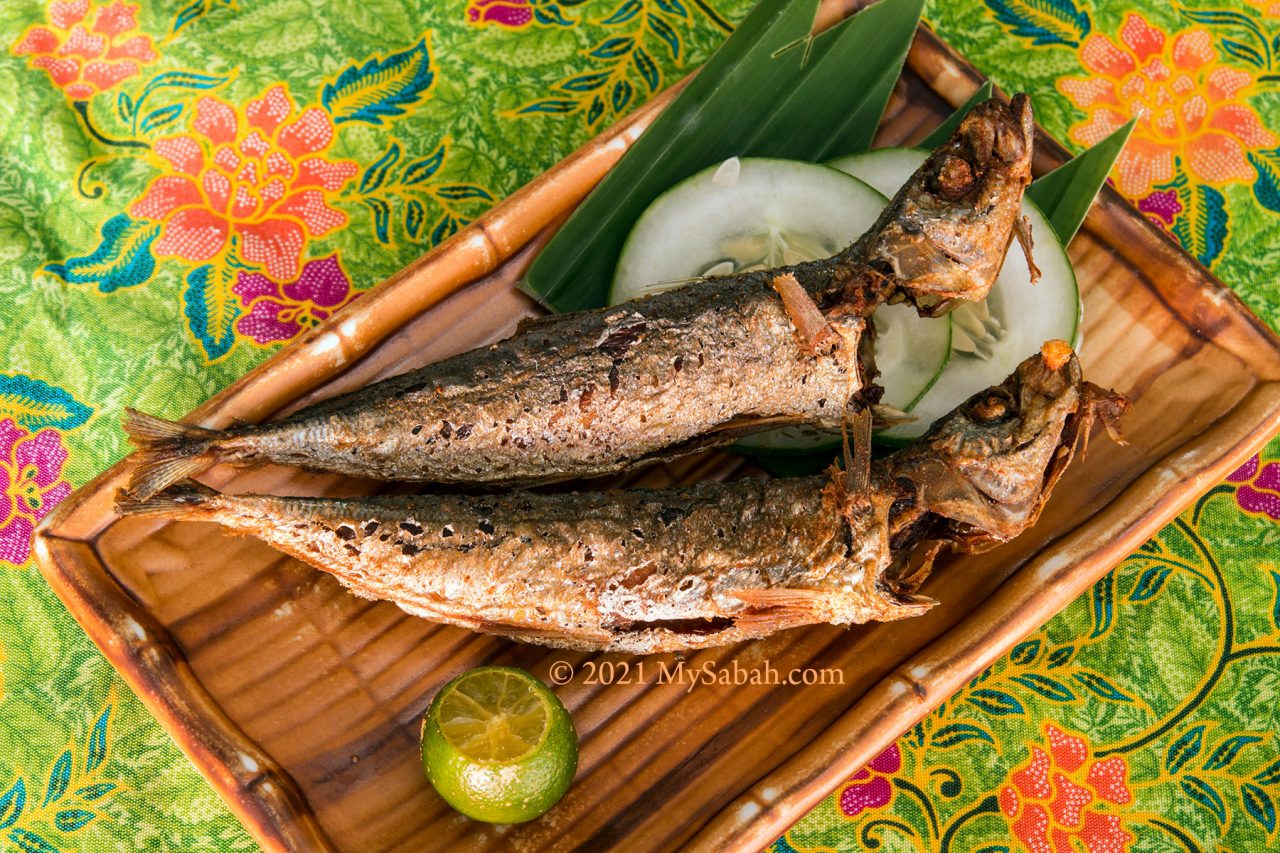
The locals’ favourites are bambangan, tuhau, losun, and salty fishes. You can add anything, even hotdog and chicken wing as you pleased, but a balance diet is always encouraged. For tourists, the “safe” choices are hinava, ikan basung and vegetables. If you are on a gastronomic adventure, try tuhau, bambangan, and bosou for acquired tastes. Tip: these food are more delicious if you eat them with your hands.
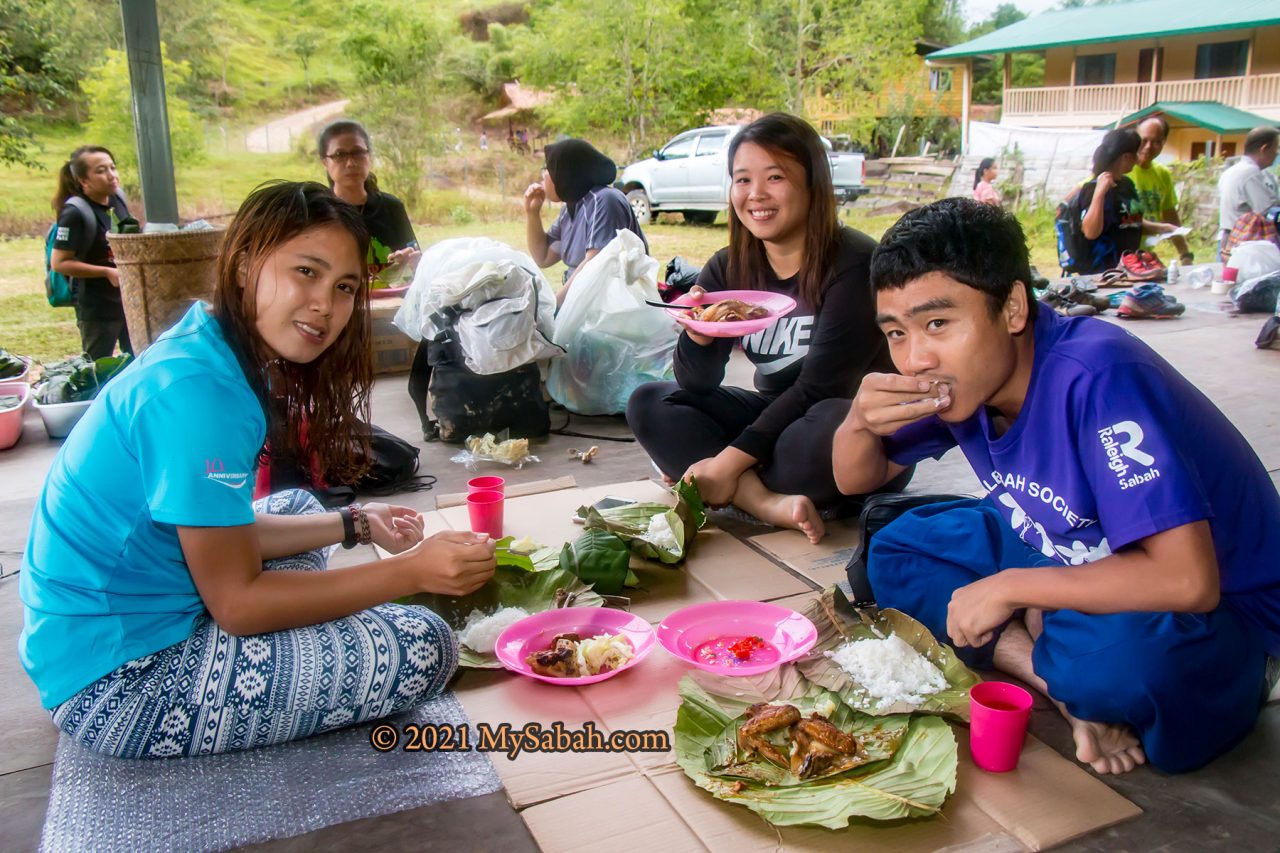
Where to Eat
Though Linopot and the food mentioned above are true Sabah dishes, most tourists haven’t tried them. Most travel agents bring tourists to fancy restaurants for seafood and other food that tastes like chicken, and reluctant to challenge the taste buds of their customers with overly exotic food.
1. Sabah Homestay
The best place to try Linopot is a vacation in homestay, especially in West Coast and Interior Districts of Sabah. You will eat the same village food with the host family. Linopot is also commonly served in local wedding of Kadazandusun people.
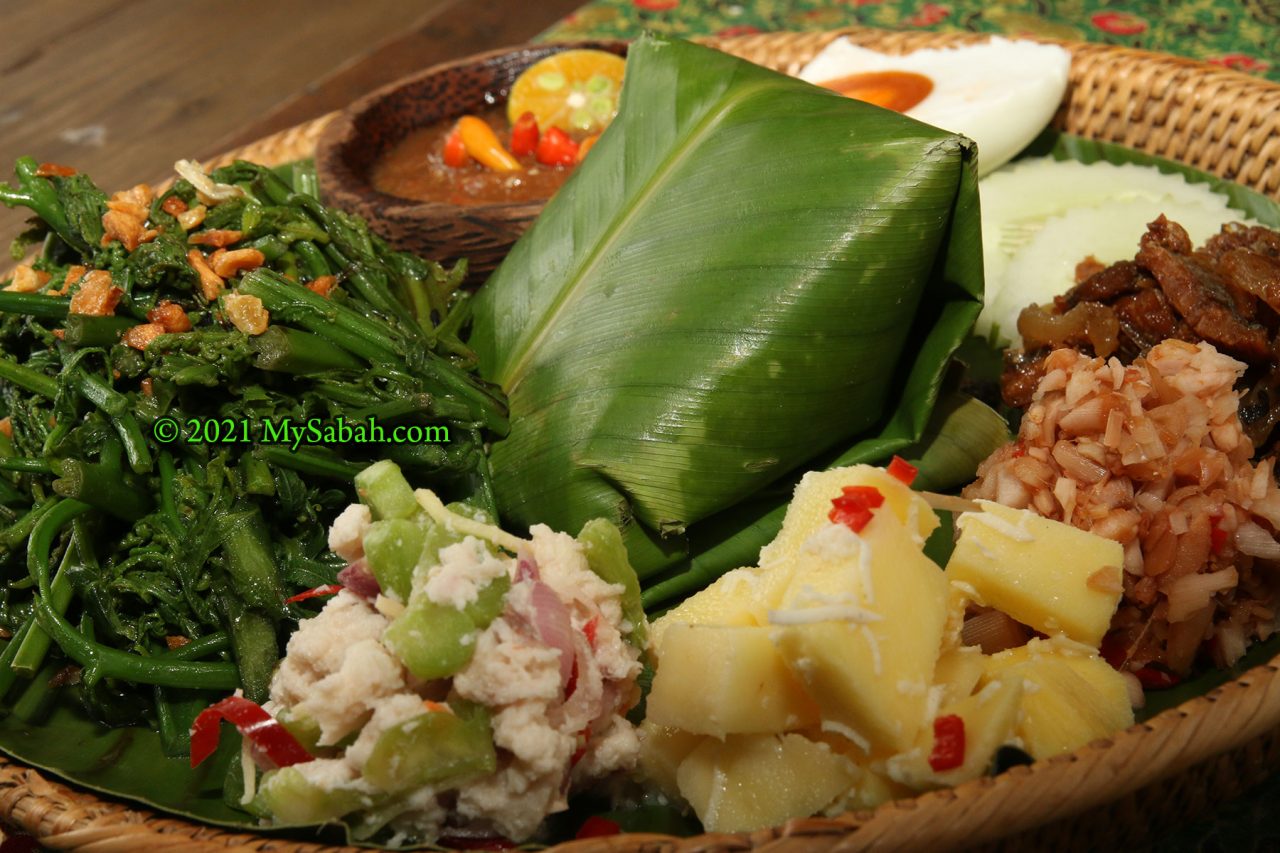
You also can order from the following Linopot set sellers (Delivery and Halal option available):
2. Aurora Anabella Lovelia (Tuaran and Kota Kinabalu)
Facebook: aurora.anabella.7
Phone (Whatsapp): +60 11-10305110
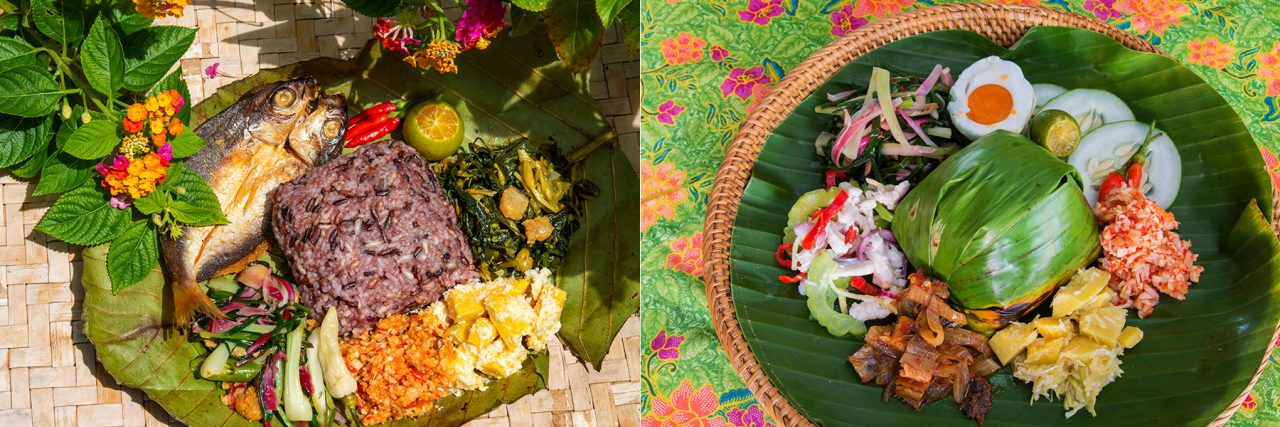
3. My Native Sabah (Kota Kinabalu)
Facebook: mynative.sabah
Instagram: @mynative.sabah
Opening Hours: 11:30am-8:30pm (Mon-Fri), 11:30am-6:00pm (Sat), Closed on Sunday
Phone (Whatsapp): +60 16-8332381
Location: 1st Floor, Plaza 333, Penampang, Kota Kinabalu, Sabah, Malaysia
(Note: they also have another outlet “Native Cafe” at Hotel N5)
4. Camy Linopot (KL & Selangor)
Instagram: @CamyLinopot
Phone: Whatsapp (Cassandra)
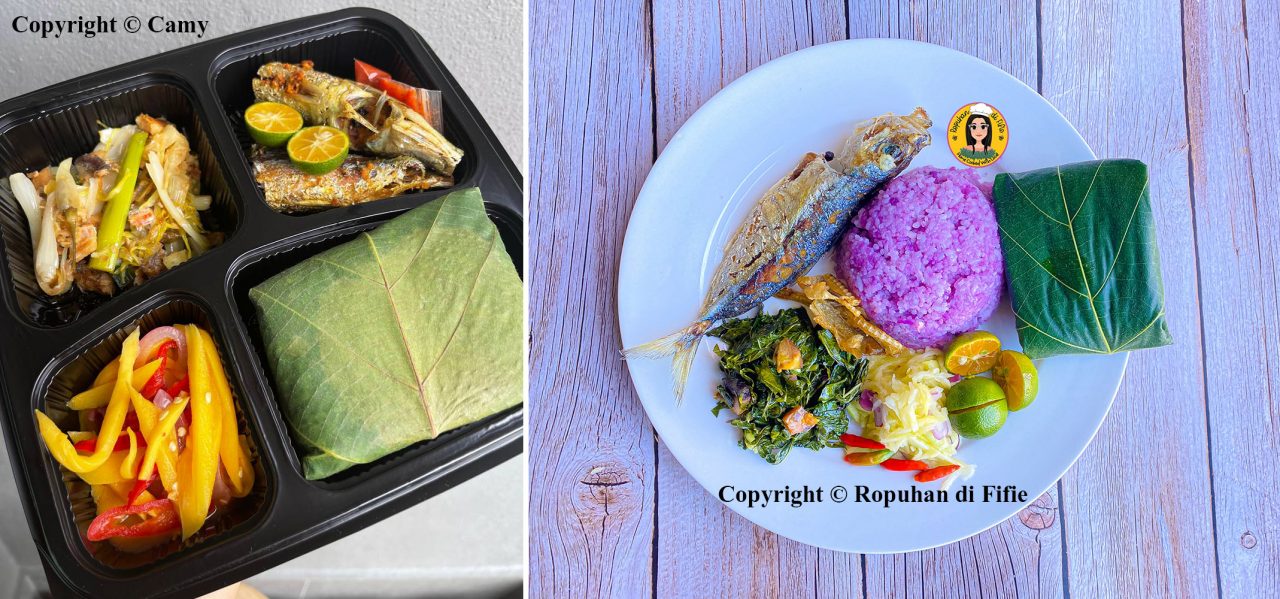
5. Other Outlets (Kota Kinabalu)
Outskirts Eatery, Little Sulap
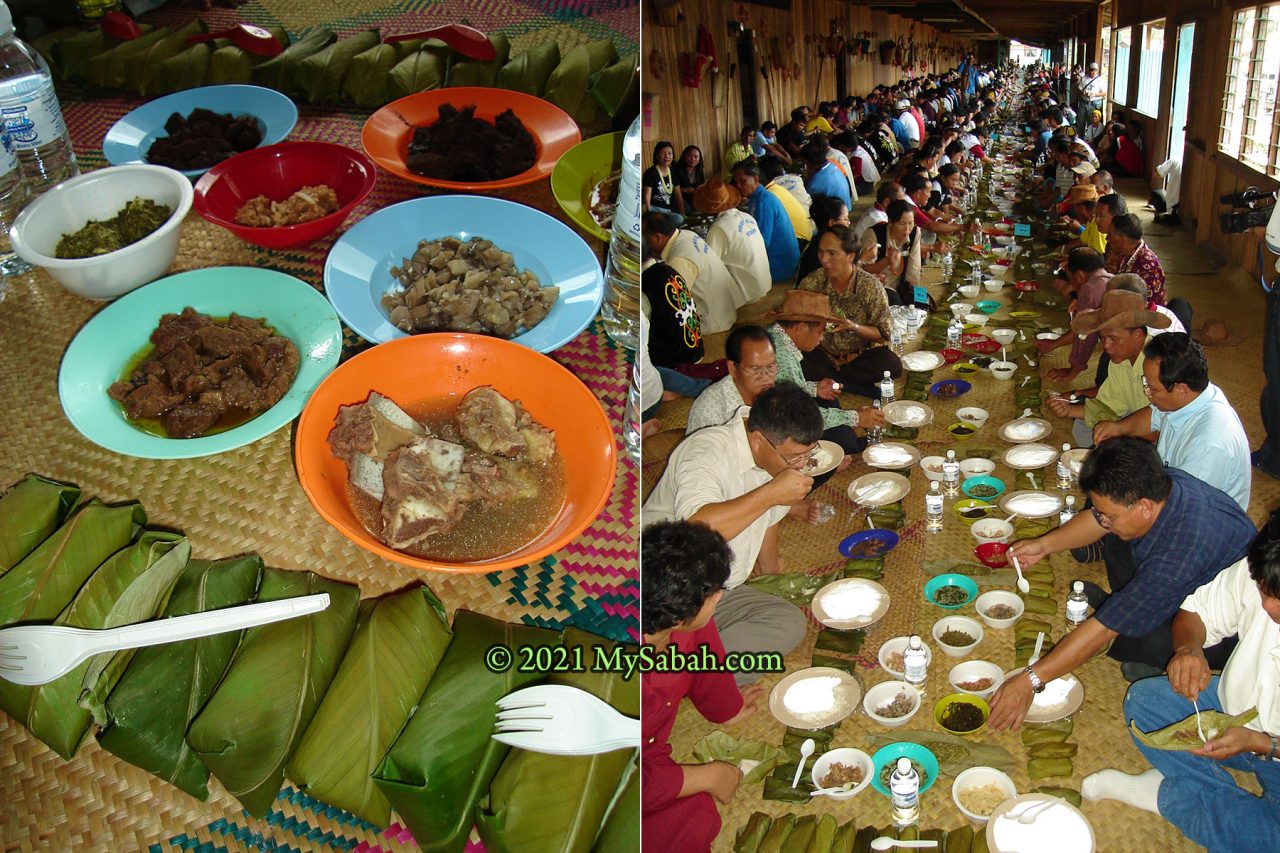
The blue-coloured Nasi Kerabu is a well-known Malaysian dish. Linopot deserves to have the same reputation, consider it’s such a remarkable cultural heritage. Just look at the video channel of Li Ziqi (李子柒), one of the most famous social influencers who features traditional culinary skills that attract tens of millions of fans. This proves that many foodies do appreciate classic cuisines. What Linopot needs is just more exposure to national and international audiences.
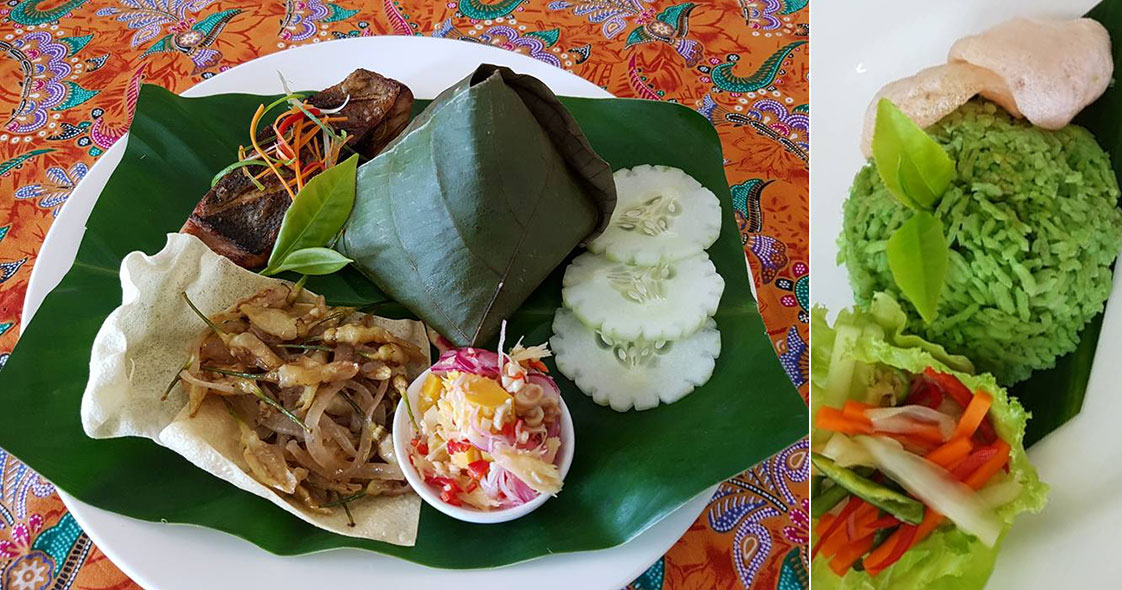
Photos taken in Sabah, Malaysia Borneo
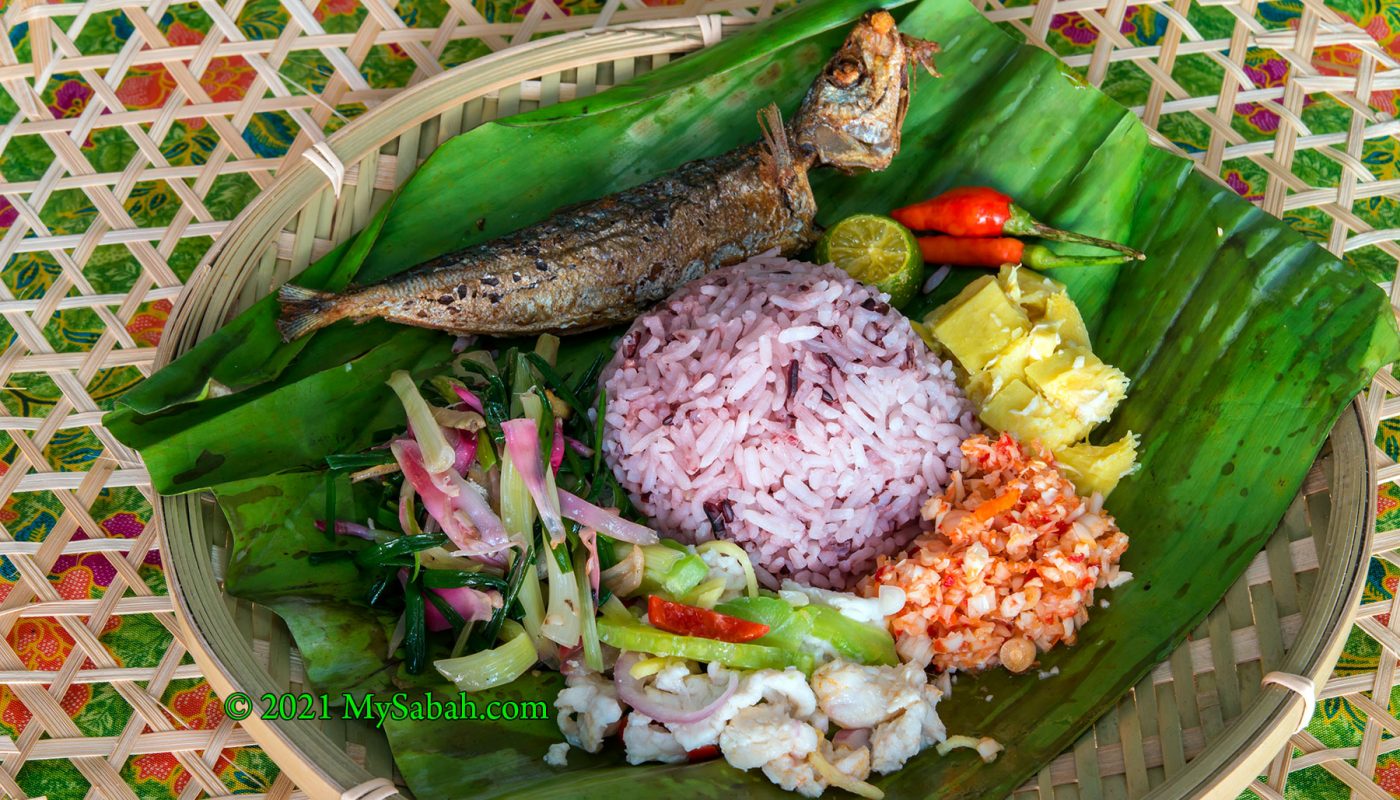

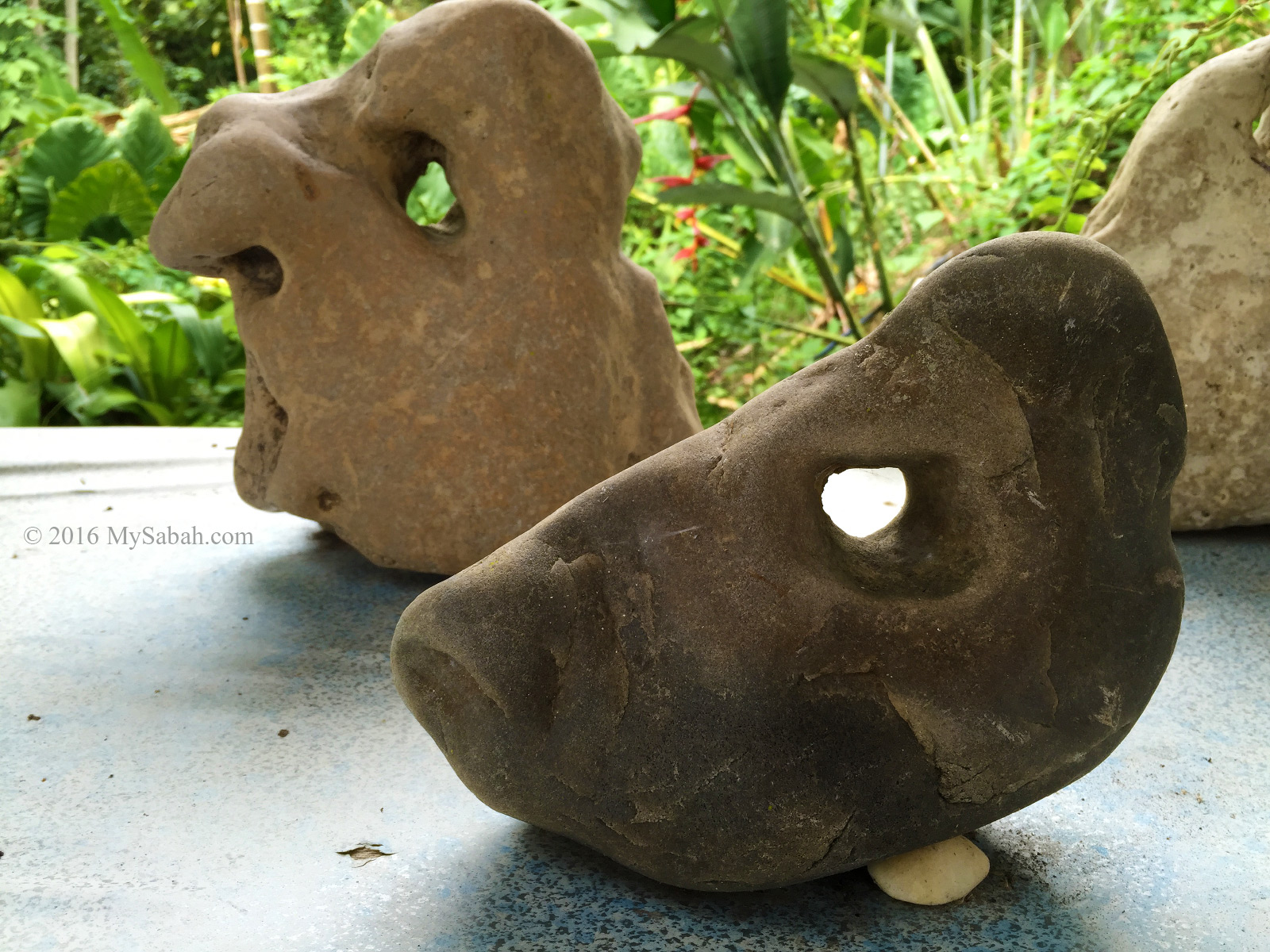


I miss eating Linopot! I will definitely come back to Sabah!
Following the preparation of the rice, the fresh leaves of doringin, kobu, tarap, tintap, longkobung, toropoi, wonihan, or banana are added to the Linopot because they are large and easily accessible.
That’s awesome! I want to try it too. 🙂